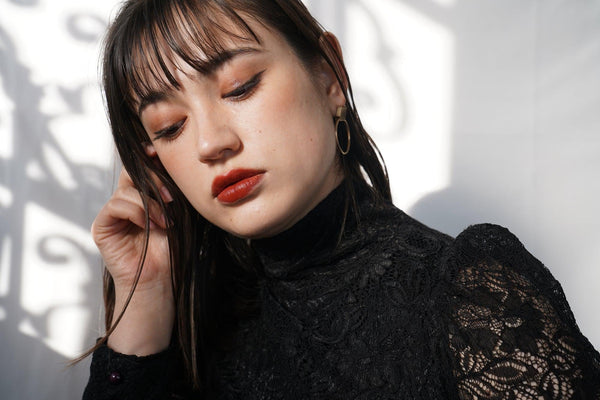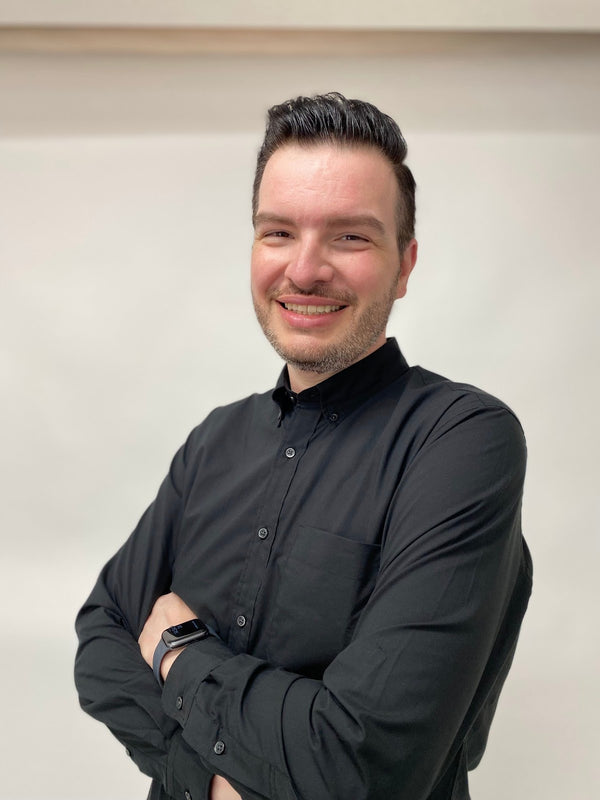
Jump to:
Japanese beauty - sometimes called “J-Beauty” - has gone through many transitions over time. But, the trend in Japanese mainstream beauty today is more of a “natural look.” Japanese beauty standards usually focus on good skincare and rather light makeup. In this article, we’ll compare the most common Japanese beauty standards with those of the West.
Differences Between Japanese And Western Beauty Standards

The standards of Japanese beauty vary from person to person. For example, one person may be more kawaii (cute), while another may be more edgy. Most Japanese women, though, fall into the mainstream category — what we might call the “natural” look. Westerners tend to use more makeup than Japanese people — and although some Westerners go with a more natural look, too, Japanese people are much more likely to do so. Here are a few ways in which Japanese beauty standards differ greatly from those in the West.
For one, the size of your face affects how beautiful you are in Japan. Yes, if you have a big face, you might be considered less attractive. In the West, however, the size of one’s face is rarely considered when judging someone’s beauty. Japanese women will often do things to make their face appear smaller — even buying products and devices that will (supposedly) shrink them down. Have you ever heard of such a thing in the West?
Another difference is the emphasis on eyelids and the size of the eyes in Japan. Many Japanese people feel that larger eyes and double eyelids are more attractive. So people use products (or get surgeries) so they can have that desirable double eyelid and bigger eyes. With Western beauty standards, people don’t usually worry about their eyelids (unless they are of Asian descent). According to Allure, Asian Americans, for example, have been getting more cosmetic surgeries lately (called blepharoplasty) to get double eyelids.
Another major difference between Japan and the West is the value placed on having light-colored skin. Japanese people find pale skin very desirable, so they often use skin whitening products. To keep their skin from getting darker, they also wear things like sunscreen, arm covers and gloves to avoid getting a tan. Westerners on the other hand often prefer a tan (look at all those tanning salons!). Of course, in the West, the skin tone you desire also depends on your natural skin tone and personal preferences. And, some people just want to whiten particular parts of their skin — do you remember what Kim Kardashian wanted to lighten?
History Of Japanese Beauty Standards

Arguably the number one cosmetic company in Japan, Shiseido, said: “Japanese beauty, especially skincare, has always been focused on time-honored methods and traditions.” Those time-honored methods and traditions go pretty far back in Japan. The Japan Cosmetic Industry Association (JCiA) says that “...traces of color on the clay haniwa figurines made during the Kofun period (300-710) [show] that in ancient times there was a custom of painting the face with red pigments.” So, people have been wearing makeup in Japan for a long time!
Around the sixth century, the use of makeup had begun to evolve. People were starting to use more imported makeup from China and Korea - like powders and rouges. As time went on, other interesting Japanese beauty standards began to develop. These included some practices that Westerners might find quite unusual (or even totally unappealing) today. One of the strangest beauty practices was coloring one’s teeth black. This unusual fashion did not continue into current times, but it was quite a different aesthetic compared to the West. Why did Japanese people find this appealing?
In the Edo Period (1600-1868), books on how to use Japanese cosmetics were written. These books showed women exactly how to use and wear their makeup. Japanese beauty standards had developed into an art form. According to the JCiA: “During this period cosmetics centered on a palette of three basic colors: red (lip rouge, fingernail polish), white (face powder), and black (tooth-blackener, eyebrow pencil).” Light skin was highly valued during this period, as well.
In the Meiji Period (1868-1912), teeth blackening was outlawed by the government. This was because the leaders of Japan at the time were pushing for westernization. Also during this era, a lead-free powder was developed (after concerns over lead poisoning).
From the 1910s on, Japanese beauty standards were more and more influenced by the West. Shades of makeup became available in many colors, and different fads came and went. To this day, Japanese beauty is still influenced by the West — and by the world — while maintaining its own unique qualities, as well.
Makeup Worn In Japan

Japanese women use various makeup products along with many different brands — just like most women around the world. They commonly use eyeliner, eye shadow, lipstick, foundation, powder and more.
Some of the most popular brands of makeup worn in Japan are Shiseido, Kanebo, Shu Uemura and Koh Gen Do (just to name a few). But, Japanese women don’t only use Japanese makeup — they use Western makeup brands, too. In fact, according to Japan’s Ministry of Finance, imports of cosmetics from the West have increased almost every year since 1998!
Japanese Skin Care Routine
Japanese people, like Western people, have varying skincare routines. However, there is a well-known four-step Japanese skincare routine that many people practice. Here’s a quick summary of the steps:
- Step One: Pre-cleansing
- Step Two: Cleansing
- Step Three: Pre-Moisturizing
- Step Four: Moisturizing
Sounds simple, right? Of course, you may have different steps depending on your skin, but these are the basics for many Japanese women.
Anti-Aging Products
Just like the West, Japanese people want to look young. It’s the holy grail for people around the world, isn’t it? Youth. Anyway, different from many other countries, Japan happens to create some of the best anti-aging products in the world. They use various ingredients that are quite effective - including collagen, vitamins and antioxidants.
The Parasol or “Sunbrella”

The parasol, sun umbrella or the “sunbrella” — however you choose to call it — is something you see a lot of in Japan. Many Japanese women (almost exclusively women) use parasols in the summer. This isn’t very common in the West (although it used to be - over a century ago). Japan’s Ministry of Foreign Affairs has a very interesting article on the subject. They said, “although some other countries still use parasols, the custom of using them as an everyday item seems unique to Japan.”
But why are sun umbrellas so popular? Well, there are of course the health benefits to avoiding too much sunlight, as well as staying cooler in the heat. But, one of the primary reasons is simply keeping the skin light in color. Again, light skin is very popular in Japan. Other items Japanese people use to keep their skin light are arm covers, gloves and (like the West) sunscreen.
Japanese Male Beauty Standards

In Japan, you may be surprised to find that men wear makeup, too. Okay, not all men, but definitely a fair number of them. Male beauty standards in Japan are a bit different from those in the West. For example, an American might think that Japanese men are more “metrosexual” than Westerners. Many men in Japan can carry fashionable bags, have stylish hair, wear foundation or concealer, eye makeup and even paint their nails (that last one is really just now gaining popularity with a younger crowd).
Mens’ hairstyles are particularly interesting. You’ll see men with perms, straight hair, long hair and more — it really all depends on the person — and they use many different products to achieve their look. However, if a person is working in an office, their hair tends to be shorter. If someone is a college student or not in an office environment, they have the freedom to be more experimental and expressive (long hair and hair coloring are more common). Depending where you are, you might even see some truly outrageous haircuts and bright colors - especially in places like Harajuku.
Japanese Beauty Standards vs Other Asian Countries
Beauty standards in East Asia have many similarities to Japan. Korean “K-Beauty” is having a huge influence on the industry in Asia (and the world). But Japan, China and Korea all share somewhat similar beauty standards. For example, having big eyes with double eyelids and lighter skin are popular throughout East Asia.
The Dark Side Of Japan Beauty Standards

While most Japanese beauty practices and beliefs don’t really have a dark side, there are some negative aspects. For example, many people want to have larger eyes and double eyelids. According to a clinical study, about 40% of Japanese people have natural double eyelids already. For many of those in the remaining 60%, it’s something they want. Fortunately (?) for them, they can get double eyelids (and bigger eyes), if they use the right products — or have a surgical procedure. Although some might see this as harmless (or just a personal decision) others see it as people seeing a defect in themselves and not valuing their own natural beauty.
Another potential dark side of beauty culture in Japan is the desire to have pale skin. This is something that has been popular since ancient times in Japan, but in modern society (and around the world) there is a push to embrace people of all skin tones. This desire to have pale skin can be particularly painful to people of color living in or visiting Japan, because lighter skin may not be achievable (if they want it). Therefore, they may not be seen as “beautiful” — and if nothing else, they will definitely be seen as different. One person of color living in Japan said he knows Black people in Japan who can’t feel positive about themselves due to the color of their skin. Also, finding makeup for darker skin tones is not easy (as is apparent even on Reddit).


0 comments